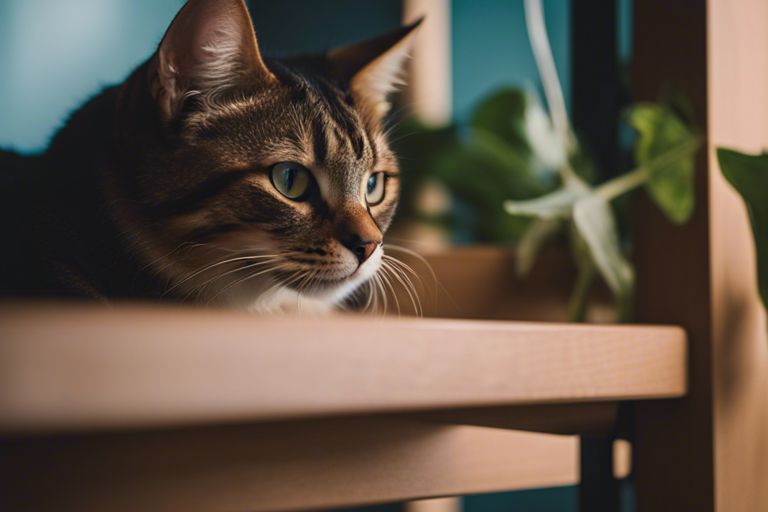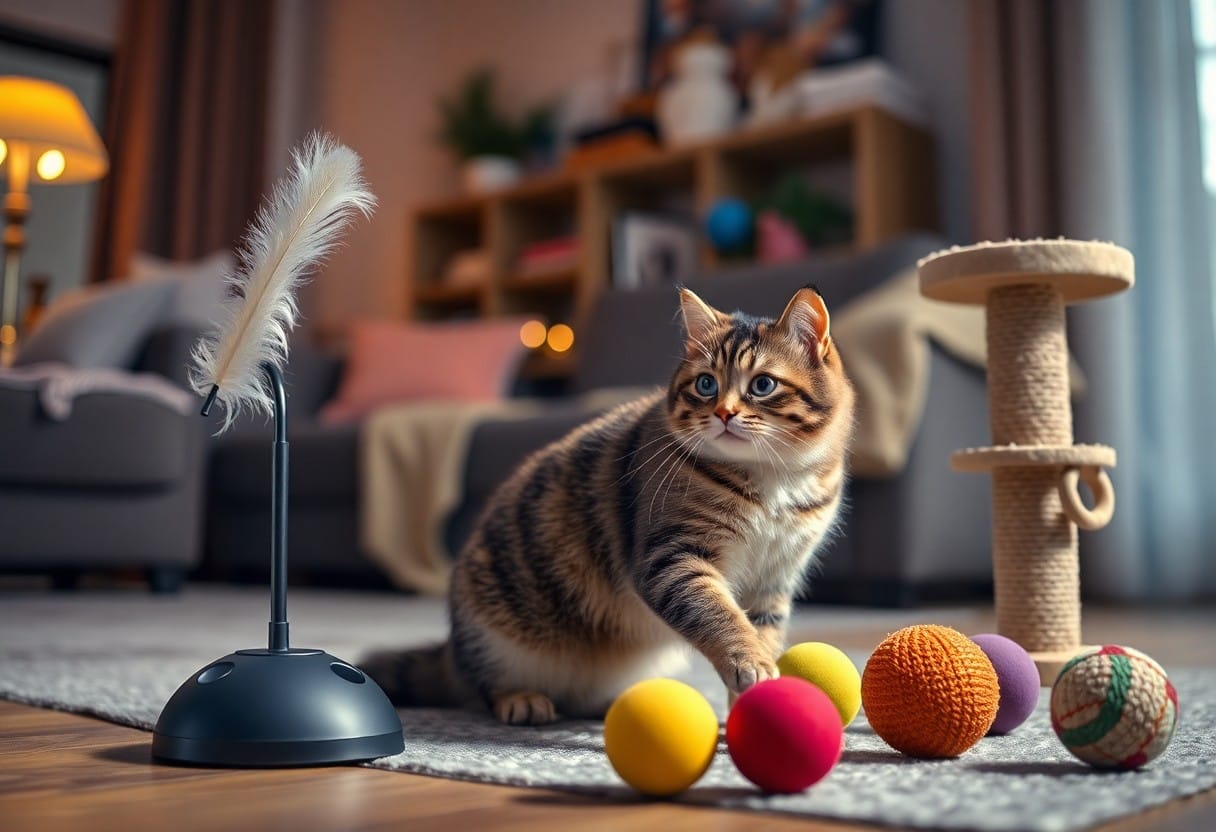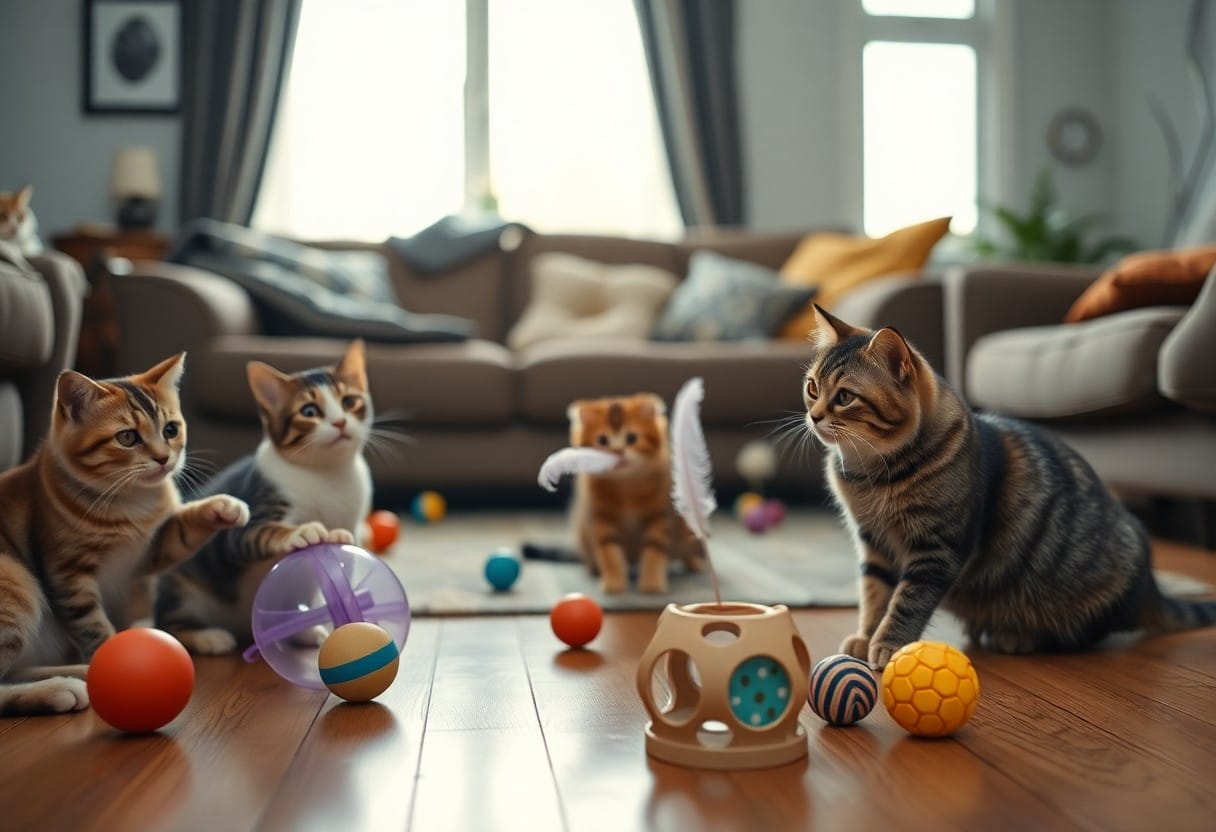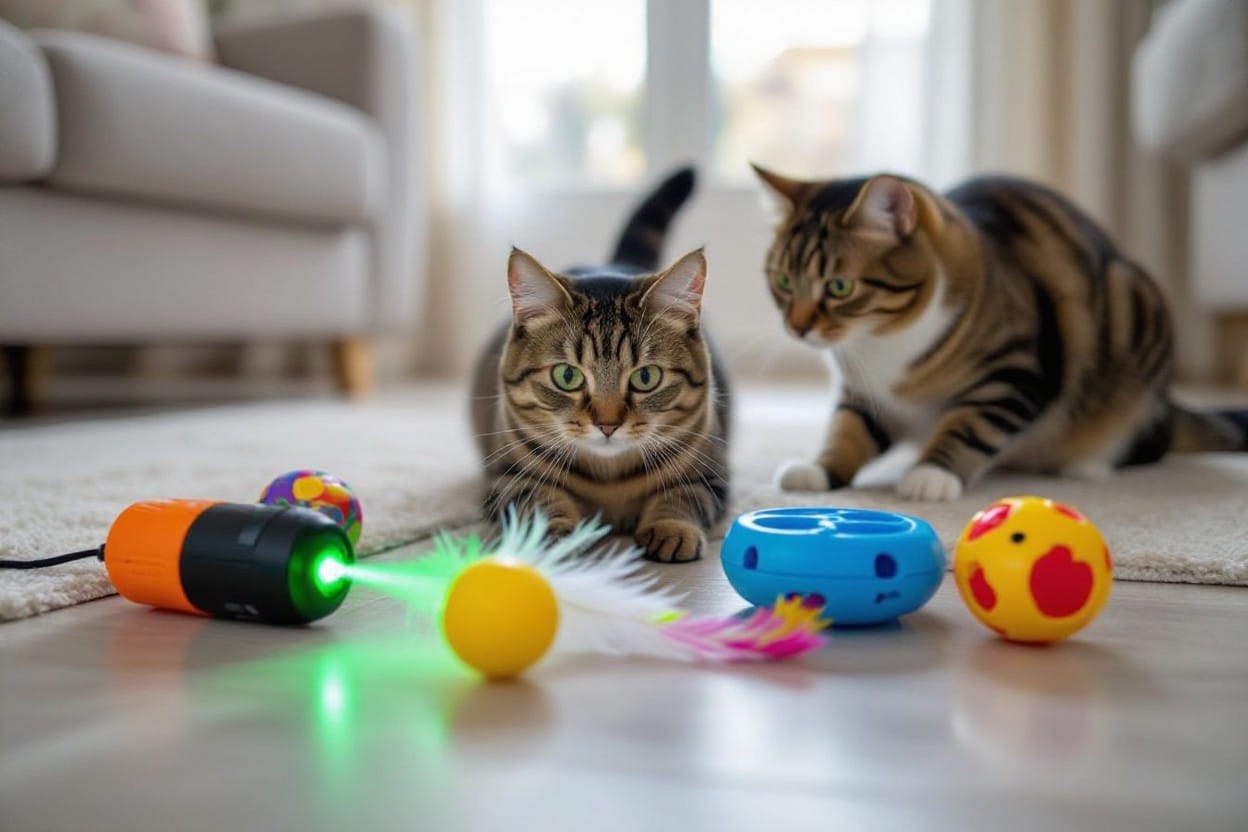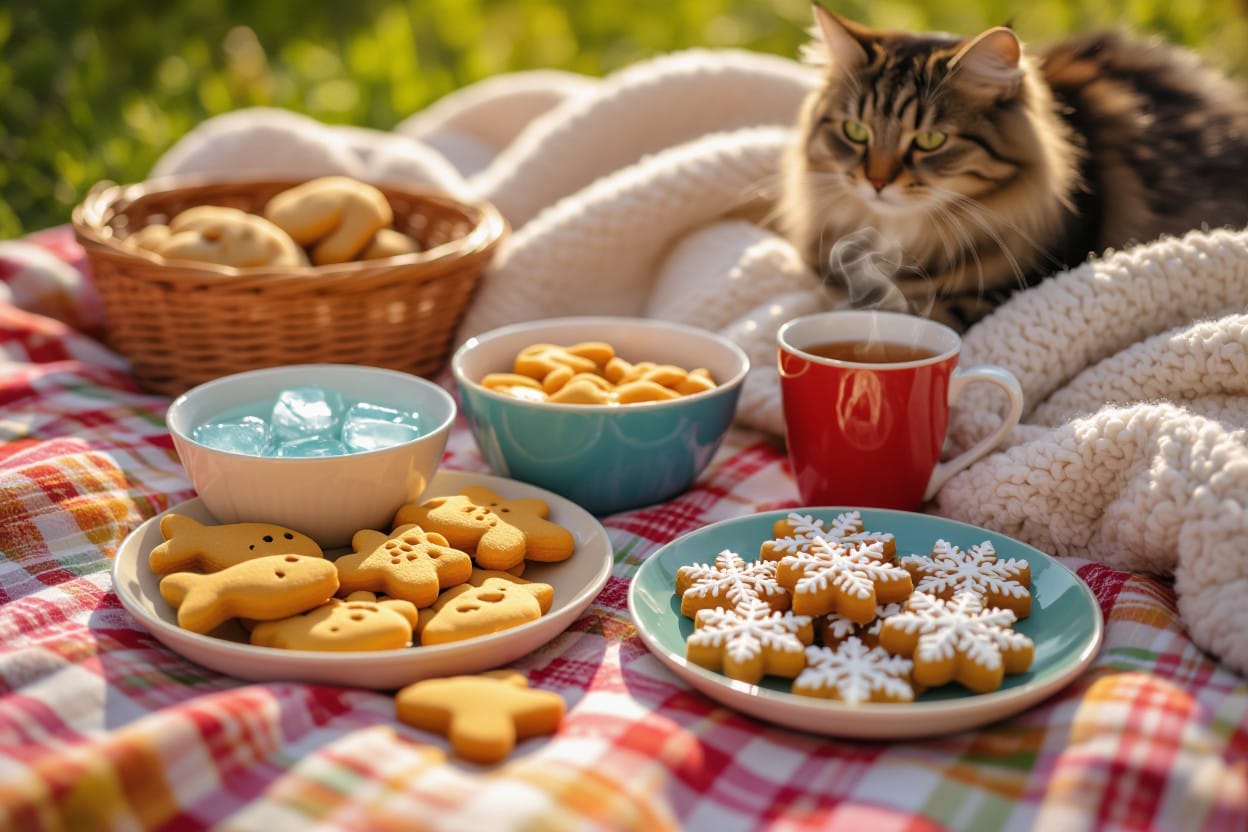Over the years, many cat owners have learned that keeping their feline companions indoors is the best way to ensure their safety and well-being. While this decision is undoubtedly a wise one, it also comes with its own set of challenges. In this top 10 list, we will explore some vital tips for keeping your indoor cat happy and healthy, so you can provide the best possible environment for your beloved pet.
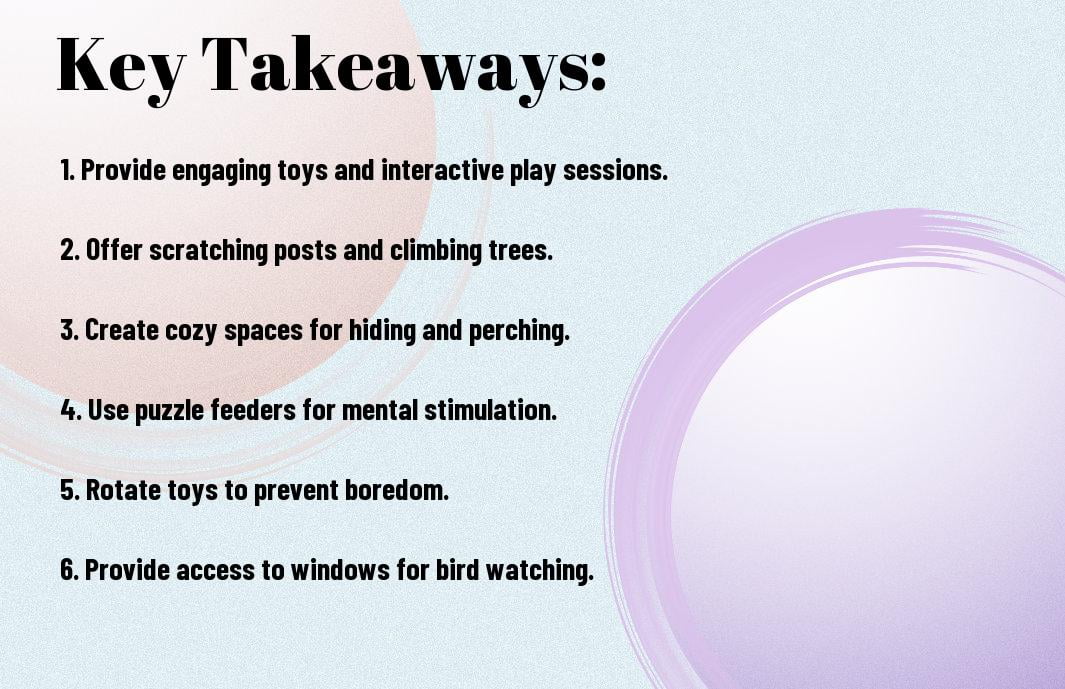
Provide Stimulating Toys
Your indoor cat’s environment plays a crucial role in keeping them happy and healthy. One way to ensure your cat’s mental and physical well-being is by providing stimulating toys that cater to their natural instincts to hunt, pounce, and play.
Interactive puzzles
There’s nothing more satisfying for a cat than figuring out a puzzle and getting a tasty treat as a reward. Interactive puzzles can engage your cat’s mind and keep them entertained for hours. These toys are designed to challenge your cat’s problem-solving skills and provide mental stimulation, which is imperative for their overall well-being.
Chasing toys
An assortment of chasing toys, such as feather wands, laser pointers, or toy mice, can help satisfy your cat’s hunting instincts. These toys encourage your cat to stalk, chase, and pounce, mimicking the behaviors they would exhibit in the wild. Chasing toys provide both mental and physical exercise for your indoor cat, helping to prevent boredom and obesity.
With a variety of stimulating toys at your disposal, you can keep your indoor cat entertained and happy while ensuring they live a fulfilling and active life indoors.
Offer Climbing Opportunities
Cat trees
Some indoor cats have a natural instinct to climb and perch up high, mimicking their wild counterparts. To satisfy this need, investing in a cat tree can greatly enhance your cat’s environment. Cat trees come in various sizes and designs, providing platforms at different heights for your cat to explore and lounge on. This not only encourages exercise but also gives your cat a sense of ownership over their territory.
Wall shelves
To create more vertical climbing opportunities for your indoor cat, consider installing wall shelves at varying heights. Some cats enjoy scaling walls and perching on elevated surfaces, giving them a sense of security and observation. Wall shelves can also help save space in smaller living areas while encouraging your cat to satisfy their climbing instincts.
This type of vertical space can serve as a navigational highway for your cat, allowing them to move freely around the room without touching the floor. It also provides mental stimulation as they figure out different pathways and vantage points within their indoor environment.
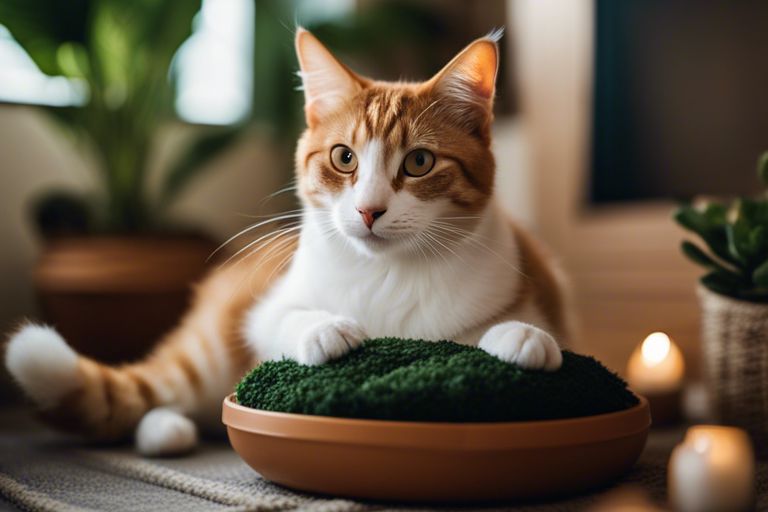
Maintain Regular Playtime
Not only does playtime provide physical exercise for your indoor cat, but it also stimulates their mind and prevents boredom. Regular play sessions can help prevent behavioral issues and strengthen the bond between you and your feline friend.
Daily sessions
Now, make sure to schedule daily play sessions with your cat to keep them active and engaged. Use interactive toys such as feather wands, laser pointers, or puzzle feeders to keep them entertained and mentally stimulated. Aim for at least 15-20 minutes of playtime each day to ensure your cat gets the exercise they need.
Varied activities
Maintain a variety of activities to prevent your cat from getting bored. Cats have different preferences when it comes to play, so it’s vital to provide a mix of toys and games to keep them interested. Some cats may enjoy chasing toys that mimic prey, while others may prefer scratching posts or climbing towers for physical activity.
You can also rotate toys regularly to keep things fresh and exciting for your cat. Introducing new activities and challenges can help prevent your indoor cat from becoming lazy or developing destructive behaviors out of boredom. Keep their environment stimulating and engaging to ensure a happy and healthy cat.
Create a Window View
After keeping your indoor cat entertained with toys and playtime, consider setting up a window view for them to enjoy. Cats love watching the world outside, and providing them with a view can help keep them mentally stimulated and happy.
Bird feeders outside
Create a stimulating environment for your indoor cat by placing bird feeders outside the window. This will attract birds and butterflies, providing your cat with plenty of entertainment as they observe the wildlife from the comfort of their indoor space.
Comfortable perch
The key to creating a successful window view for your cat is to provide a comfortable perch where they can sit and watch the world go by. Choose a sturdy cat window perch that attaches securely to the window sill, allowing your cat to relax and enjoy the view without any risks of falling.
With a comfortable perch in place, your indoor cat will have a cozy spot to bask in the sun, watch birds, and nap peacefully while feeling connected to the outside world.
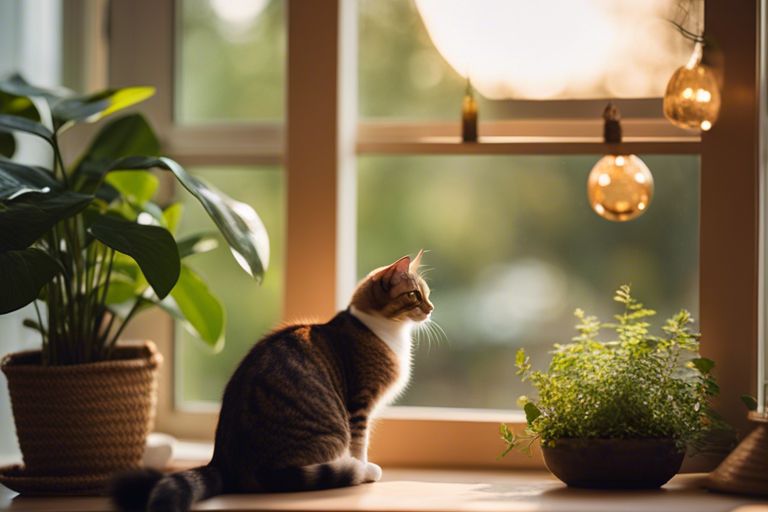
Establish Routine Care
Consistent feeding times
All indoor cats thrive on routine, and this includes consistent feeding times. Even though cats are known for their independence, they rely on their owners for food. Set specific times each day to feed your cat to establish a routine they can rely on. This not only provides structure for your cat but also helps prevent overeating or undereating.
Regular vet visits
Regular vet visits are important for the health and well-being of your indoor cat. It’s recommended to schedule annual check-ups with your veterinarian to ensure your cat is up to date on vaccinations, parasite prevention, and overall health. These visits also allow the vet to catch any potential health issues early on, increasing the chances of successful treatment.
During vet visits, your cat will receive a physical examination, and the vet may recommend additional preventive care, such as dental cleanings or blood work, based on your cat’s age and health status. By staying proactive with regular vet visits, you can help your indoor cat live a long and healthy life.
Grow Cat-Friendly Plants
Now, one way to keep your indoor cat happy is by providing them with cat-friendly plants. Not only do these plants add a touch of green to your living space, but they also offer a natural and safe way for your cat to interact with their environment.
Catnip
Clearly, one of the most well-known cat-friendly plants is catnip. Catnip contains a compound called nepetalactone, which produces a euphoric effect in cats when they smell or ingest it. You can grow catnip in pots both indoors and outdoors, allowing your cat to enjoy its effects whenever they feel like it.
Cat grass
With cat grass, you can provide your indoor cat with a safe and healthy alternative to outdoor grass. Cat grass is a type of grass that is safe for cats to nibble on and can help with their digestion. You can easily grow cat grass indoors in a small pot or planter, allowing your cat to graze whenever they have the urge.
Plants that are safe for cats to interact with can help fulfill their natural instincts and provide mental stimulation. Make sure to do your research and choose the right cat-friendly plants to keep your furry friend happy and entertained.
Implement Scratch Posts
Various materials
For scratch posts, there are various materials you can choose from based on your cat’s preferences. Some cats may enjoy sisal rope, while others may prefer carpet or cardboard. You can even find scratch posts made from wood or corrugated cardboard. It’s important to observe your cat’s scratching habits to determine which material they prefer.
Strategic placement
You’ll want to strategically place scratch posts in areas where your cat likes to scratch. Common areas include near their favorite sleeping spots, by windows, or close to their litter box. Cats often like to scratch after waking up from a nap or when they’re feeling playful. By placing scratch posts in these locations, you can encourage your cat to use them instead of your furniture.
Various scratch posts come in different shapes and sizes, so you can choose ones that fit well in your home and appeal to your cat. Some cats prefer vertical scratch posts, while others may enjoy horizontal scratch pads. Experiment with a few different options to see what your cat responds to best.
Ensure Peaceful Resting Areas
Quiet spots
Keep your indoor cat happy by providing quiet spots where they can retreat to for some peace and quiet. Cats, being natural predators, need a space where they feel secure and can observe their surroundings without feeling threatened. Ensure these areas are free from loud noises, high foot traffic, and other disturbances.
Soft bedding
Even though cats may seem like they can sleep just about anywhere, they do appreciate a soft and comfortable resting spot. Invest in cat beds or blankets that offer cushy padding for your feline friend to curl up on. Cats love to knead and make their sleeping spot just right, so having soft bedding allows them to do so in comfort.
Assuming your cat may enjoy sleeping on your bed or couch may not always be the best option, as they may prefer their own designated spot. By providing soft bedding in a quiet area, you are giving your cat a sense of security and ownership over their resting space.
Encourage Human Interaction
Many indoor cats crave human interaction and companionship to stay happy and healthy. Here are some tips to ensure your feline friend gets the attention they need to thrive.
Cuddle time
You’ll find that some cats are more affectionate than others, but all cats can benefit from regular cuddle sessions. Set aside some time each day to snuggle with your cat, whether it’s on the couch while watching TV or before bedtime. This bonding time not only strengthens your relationship but also provides comfort and security for your cat.
Gentle play
For indoor cats, playtime is important for physical and mental stimulation. Engage your cat in gentle play sessions using toys like feather wands or laser pointers. Encourage your cat to stalk, pounce, and chase, mimicking their natural hunting instincts. Be mindful of your cat’s age and energy level, adjusting the intensity of the play session accordingly. Interactive play not only keeps your cat entertained but also helps prevent boredom and behavioral issues.
Final Words
Following these top 10 tips for keeping your indoor cat happy will ensure that your feline companion leads a healthy and contented life. By providing mental and physical stimulation, creating a safe environment, and maintaining a consistent routine, you can help your indoor cat thrive and prevent behavioral issues.
Recall, indoor cats rely on us for their well-being, so it is crucial to prioritize their needs and give them the love and attention they deserve. With the right care and attention, your indoor cat can live a fulfilling and enriched life within the comforts of your home.
FAQ
Q: Why is it important to keep an indoor cat happy?
A: Indoor cats rely on their environment for mental and physical stimulation, so keeping them happy is necessary for their overall well-being.
Q: How can I keep my indoor cat entertained?
A: Providing toys, climbing structures, puzzle feeders, and interactive play sessions can help keep your indoor cat entertained and engaged.
Q: Is it necessary to create a safe outdoor space for my indoor cat?
A: While not necessary, creating a secure outdoor enclosure or catio can offer your indoor cat the opportunity to experience the outdoors safely.
Q: What is the best way to maintain a healthy diet for my indoor cat?
A: Feeding your indoor cat a balanced diet, providing fresh water at all times, and monitoring their weight can help maintain their overall health and well-being.
Q: How can I ensure my indoor cat receives enough exercise?
A: Encouraging daily play sessions, providing interactive toys, and setting up climbing structures can help ensure your indoor cat stays active and healthy.
